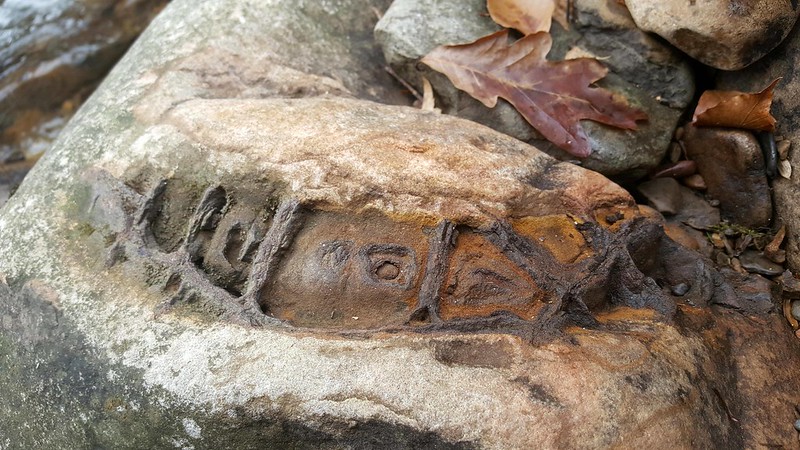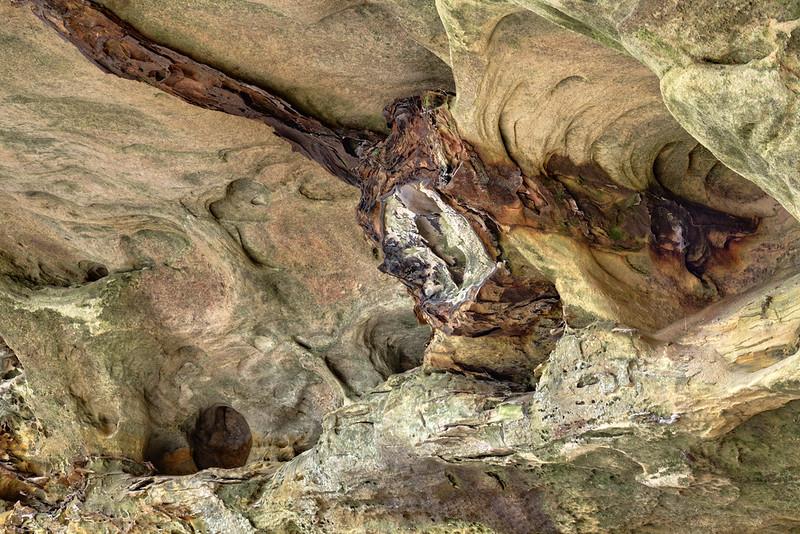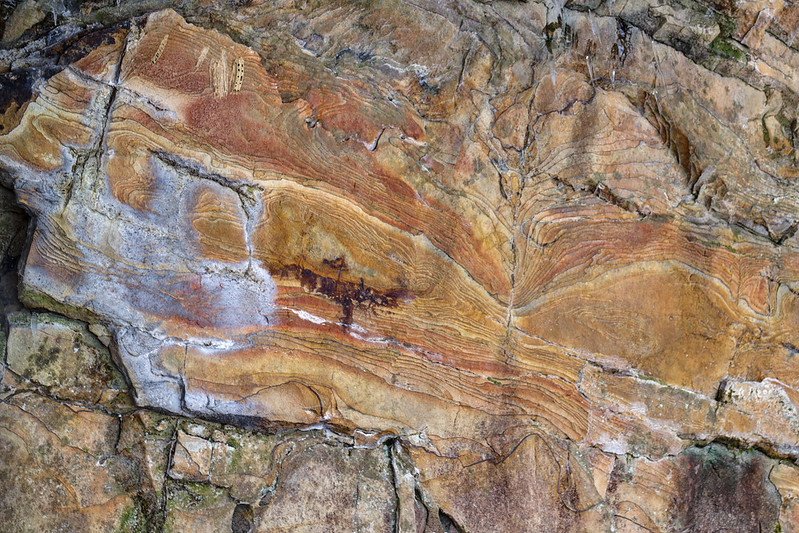Sandstone Boxwork

Photo credit: Brian Solomon / @waterfall_hillbilly
 Photo credit: Bryan Melton |
There are three things that must happen first to produce boxwork.
-
Jointing
Mineralization
Weathering
Jointing
Produced in a parent rock of sandstone, this type of boxwork originates as small joints which run in a box shape. The origins of these joints could be from frost wedging - where water in the rock freezes and cracks the rock, or it could unloading pressure from the rock de-watering, or it could be from some other physical process. The origins of the boxwork joints are still a bit of a mystery.If the following steps occur without previous jointing then one gets Liesegang Rings.
Mineralization
The joints become a place of preferential mineralization. Groundwater loaded with iron minerals moves through the pores of the sandstone. Where it finds a void, like in the joints, it tends to drop minerals out of solution. The rust colored minerals you find on your water heater at the house are chemically quite similar to this boxwork.Weathering
The joint surface must first be exposed to weathering, whether by cliff failure, slump, or some other wasting process. The exposed surface's sandstone weathers out first, leaving in place the mineralized boxwork. Because the sandstone around it is removed, the boxwork tends to protrude after its been well developed.Similar Features
Boxwork is a type of Liesegang ring. Liesegang rings lack obvious structural control, as in they do not have joint influenced development.


Comments